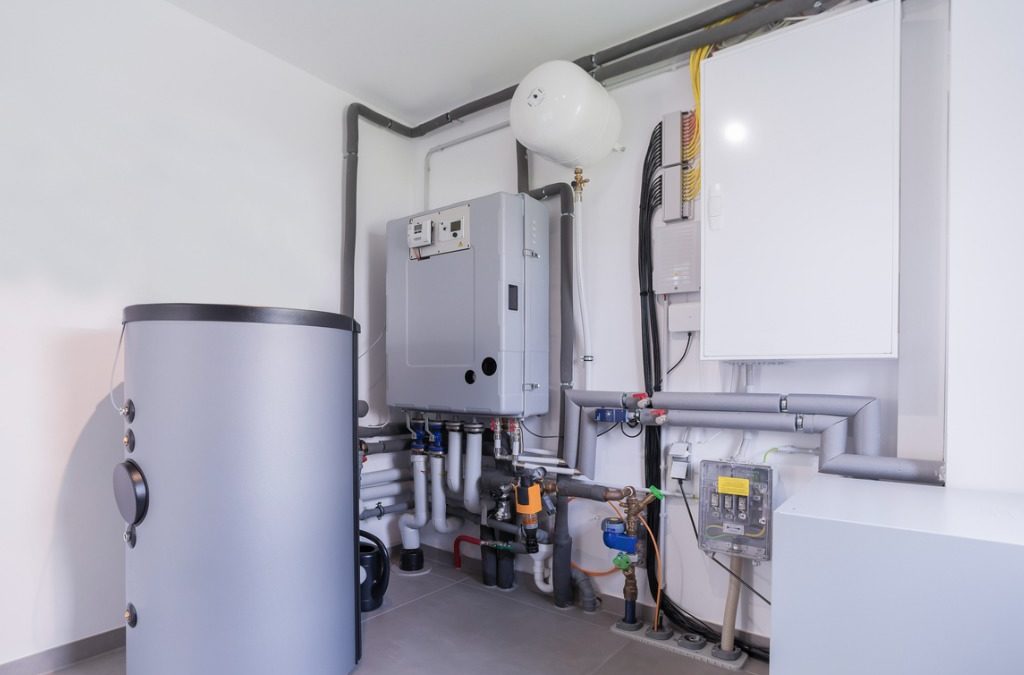Think about trying to go a single day without heat in the harsh winter. You’d be cold all day long and your food would be frozen! And that’s only in a domestic setting. Imagine factories and commercial buildings having no way of efficiently producing vast amounts of heat. Heat is one of the most important things in our day-to-day lives, so it’s great that we have boilers to do the heavy lifting for us.
There is a point with all liquids where, once it has been heated enough, bubbles begin to form. These bubbles then pop so as to release heat and maintain equilibrium. This is called a boiling point! The temperature at which water begins to boil is 100 degrees Celsius or 212 degrees Fahrenheit.
The way boilers work is by keeping the heated water in a very tight, small container that doesn’t allow the water to boil until it is much hotter due to there being nowhere for the steam to be released.
This sounds a little dangerous, though, huh? Well, that’s because it could be if pressure cookers and boilers weren’t made out of such strong, thick metal. If they weren’t, the pressure of the boiling hot water would build and build until the container explodes!
Disregarding any potential explosions, however, it’s not so complicated, right? Now, let’s dive in a bit deeper! So what happens once a boiler is nice and pressurized? Well, that depends on whether you have a water or steam boiler.
Some boilers simply produce extremely hot water that goes on to be used for having a hot water supply or heating your offices. On the other hand, other boilers produce steam that is then used to power turbines in order to generate lots of electricity for industrial outfits.
What Are Furnaces and How Do They Work?
Before we get on to the different types of boilers, it is important to understand how the water in boilers becomes superheated. Unsurprisingly, the water heaters in boiler systems are called furnaces.
The reaction that generates heat is called combustion, and the components required for combustion are a fuel source, heat (usually supplied by what is called a pilot light), and an oxidizing agent. When those three things are combined, the result is a series of chemical reactions that create lots of heat and light. And this is what is going on in a furnace! The type of fuel source that a furnace requires depends on the type of boiler.
Coal
One type of fuel used in boilers is coal. In industrial environments, coal is used after being finely ground because ground coal burns better than bricks of coal do.
Electric
Electricity is another heat source used for furnaces, either with resistance heating coils or electrode units. These are best used for small commercial applications.
Gas
Last, are gas-fired boilers which function by using either propane or natural gas. On the flip side, however, oil boilers use gasoline or equivalent fluids.
Types of Boilers
In the world of boilers, there are two main types: fire-tube boilers and water-tube boilers. Here, we will break down how each type is made and how that affects its function.
Fire-tube Boilers
Made up of a furnace, a water tank, and a smokestack, fire-tube boilers tend to be the cheapest type of boilers to produce and, subsequently, should only be used for low- to medium-pressure applications. This is due to two main factors. The first is that the metal outer shell isn’t terribly thick, so there is a lot of intense pressure building up in there.
The second factor is that the pressure in fire-tube boilers is constantly maintained using the smokestack, which periodically lets off steam to keep the pressure and temperature level. Another key difference between the two is in the names! In fire-tube boilers, there are water pipes that run through the boiler that are heated, which heats up the surrounding water in turn.
Water-tube Boilers
Now that we’ve tackled fire-tube boilers, how about we move on to water-tube boilers?
Well, water-tube boilers are a very similar type of system. There is just the key difference that instead of hot tubes heating up surrounding water, the tubes running through a water-tube boiler are filled with the heating water.
This makes water-tube boilers more thermally efficient. However, they are more complex to construct, and checking the quality of the water is a constant must.
Contact Design Mechanical Today for Expert Commercial HVAC Services
Design Mechanical provides expert commercial HVAC services to the Kansas City area and surrounding communities. With over 100 certified HVAC service specialists on call 24 hours a day, seven days a week, 365 days a year, you can be confident that our comprehensive commercial HVAC services will ensure that your HVAC system is always performing as expected.
If your commercial HVAC system isn’t functioning correctly, contact Design Mechanical today to schedule a free consultation with one of our experts and discover why we are the number one choice for 24/7 HVAC maintenance services in Kansas City.

